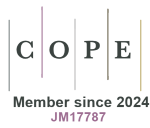Major obstetric hemorrhage management
DOI:
https://doi.org/10.33393/ao.2022.2426Keywords:
Blood coagulation, Obstetric Labor Complications, Postoperative hemorrhage, Postpartum hemorrhage, Pregnancy complicationsAbstract
Postpartum hemorrhage (PPH) is to this day one of the leading causes of maternal death and its diagnosis is still highly subjective, as it relies on unprecise estimates of the amount of blood loss. There are three areas in which PPH outcomes can be improved: prevention, treatment and rescue. PPH can escalate to a graver clinical picture of Severe Acute Maternal Morbidity (SAMM) due to an inaccurate estimate of the blood loss, inability to identify an at-risk patient, delays in testing and availability of hemoderivatives, and lack of clear guidelines and interdisciplinary communication. Many factors can predispose to PPH and in clinical practice the many causes of its insurgence are summarized with the 4T formula: Tone (uterine atony), Trauma (laceration/hematoma), Tissue (retained tissue/invasive placenta), Thrombin (coagulation). Some precautions can be taken in preventing PPH such as the use of uterotonics, the administration of oxytocin, the timing of umbilical cord clamping, and the monitoring of anemia and the platelet to fibrinogen concentration ratio. In recent years studies have been published with the goal of leading PPH diagnosis and management through universal guidelines, point-of-care testing and interdisciplinary approaches. The proposed algorithms, albeit not yet validated, are useful in the clinical practice; similarly beneficial is the use of reliable predictive panels such as the Modified Early Obstetric Warning System.
References
- Weeks A. The prevention and treatment of postpartum haemorrhage: what do we know, and where do we go to next? BJOG. 2015;122(2):202-210. https://doi.org/10.1111/1471-0528.13098PMID:25289730 DOI: https://doi.org/10.1111/1471-0528.13098
- Rath WH. Postpartum hemorrhage--update on problems of definitions and diagnosis. Acta Obstet Gynecol Scand. 2011;90(5):421-428. https://doi.org/10.1111/j.1600-0412.2011.01107.xPMID:21332452 DOI: https://doi.org/10.1111/j.1600-0412.2011.01107.x
- Geller SE, Rosenberg D, Cox SM, et al. The continuum of maternal morbidity and mortality: factors associated with severity. Am J Obstet Gynecol. 2004;191(3):939-944. https://doi.org/10.1016/j.ajog.2004.05.099 PMID:15467568 DOI: https://doi.org/10.1016/j.ajog.2004.05.099
- Dilla AJ, Waters JH, Yazer MH. Clinical validation of risk stratification criteria for peripartum hemorrhage. Obstet Gynecol. 2013;122(1):120-126. https://doi.org/10.1097/AOG.0b013e3182941c78 PMID:23743452 DOI: https://doi.org/10.1097/AOG.0b013e3182941c78
- Bateman BT, Berman MF, Riley LE, Leffert LR. The epidemiology of postpartum hemorrhage in a large, nationwide sample of deliveries. Anesth Analg. 2010;110(5):1368-1373. https://doi.org/10.1213/ANE.0b013e3181d74898 PMID:20237047 DOI: https://doi.org/10.1213/ANE.0b013e3181d74898
- Mukherjee S, Arulkumaran S. Post-partum haemorrhage. Obstetrics, Gynaecol Reprod Med. 2009;19(5):121-126. https://doi.org/10.1016/j.ogrm.2009.01.005 DOI: https://doi.org/10.1016/j.ogrm.2009.01.005
- Lancé MD. The management of critical bleeding in obstetrics. Rev Health Care. 2013;4(3S):41-51. https://doi.org/10.7175/rhc.v4i3S.879 DOI: https://doi.org/10.7175/rhc.v4i3S.879
- Bissonnette J, Durand F, de Raucourt E, et al. Pregnancy and vascular liver disease. J Clin Exp Hepatol. 2015;5(1):41-50. https://doi.org/10.1016/j.jceh.2014.12.007 PMID:25941432 DOI: https://doi.org/10.1016/j.jceh.2014.12.007
- Isbister JP. The three-pillar matrix of patient blood management--an overview. Best Pract Res Clin Anaesthesiol. 2013;27(1):69-84. https://doi.org/10.1016/j.bpa.2013.02.002 PMID:23590917 DOI: https://doi.org/10.1016/j.bpa.2013.02.002
- Pacagnella RC, Souza JP, Durocher J, et al. A systematic review of the relationship between blood loss and clinical signs. PLoS One. 2013;8(3):e57594. https://doi.org/10.1371/journal.pone.0057594 PMID:23483915 DOI: https://doi.org/10.1371/journal.pone.0057594
- Singh S, McGlennan A, England A, Simons R. A validation study of the CEMACH recommended modified early obstetric warning system (MEOWS). Anaesthesia. 2012;67(1):12-18. https://doi.org/10.1111/j.1365-2044.2011.06896.x PMID:22066604 DOI: https://doi.org/10.1111/j.1365-2044.2011.06896.x
- Frigo MG, Agostini V, Brizzi A, Ragusa A, Svelato A. Practical approach to transfusion management of post-partum haemorrhage. Transfus Med. 2021;31(1):11-15. https://doi.org/10.1111/tme.12755 PMID:33400316 DOI: https://doi.org/10.1111/tme.12755









